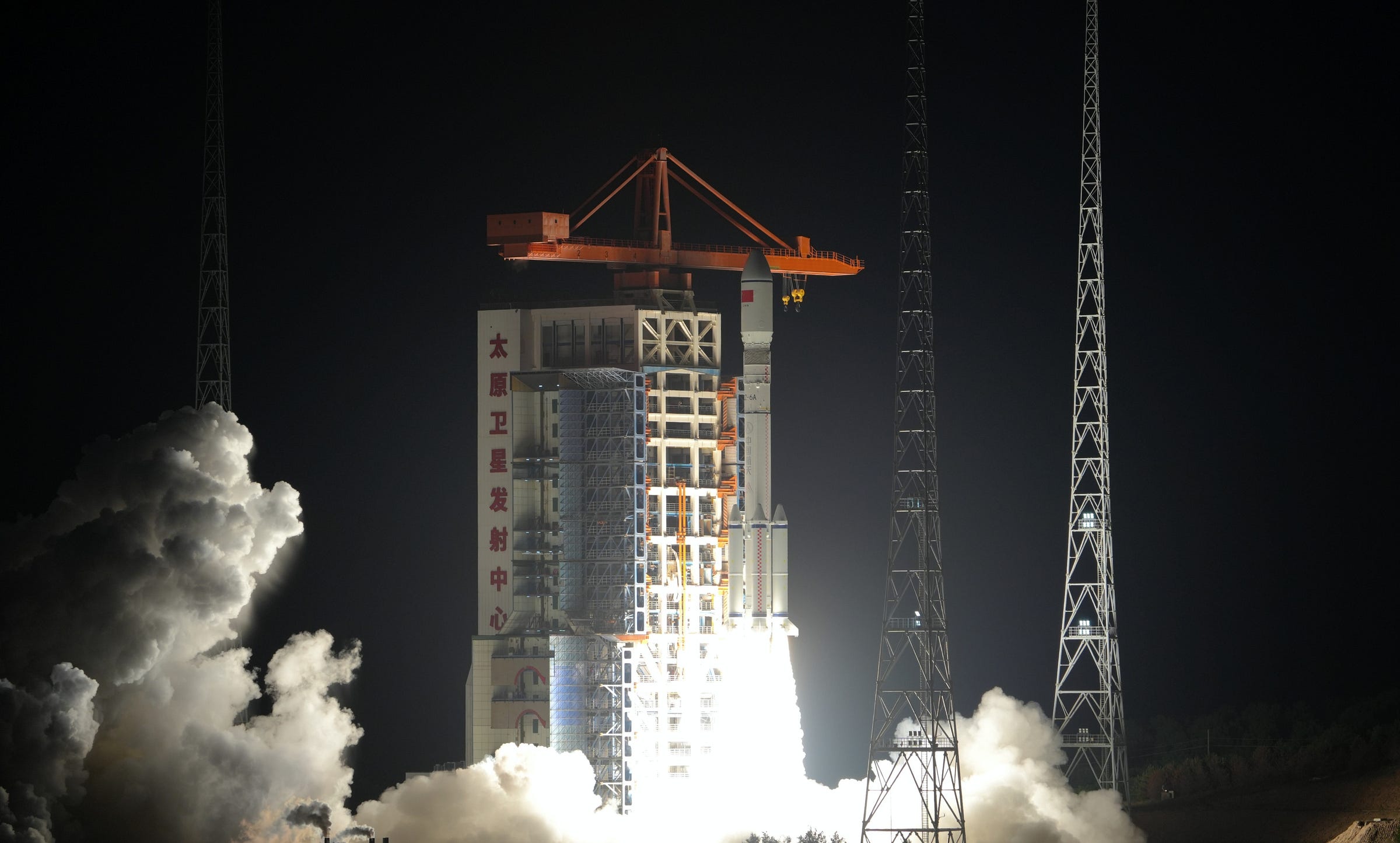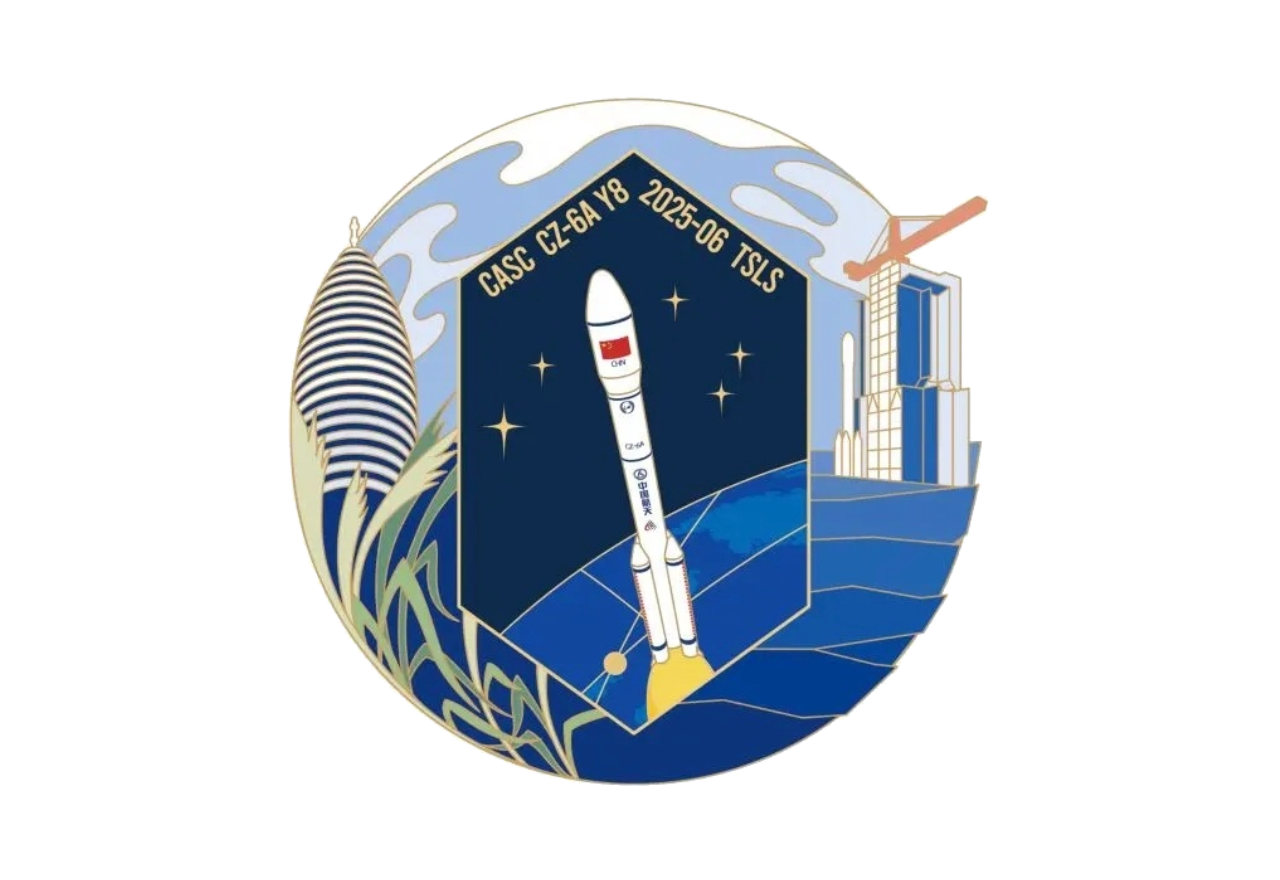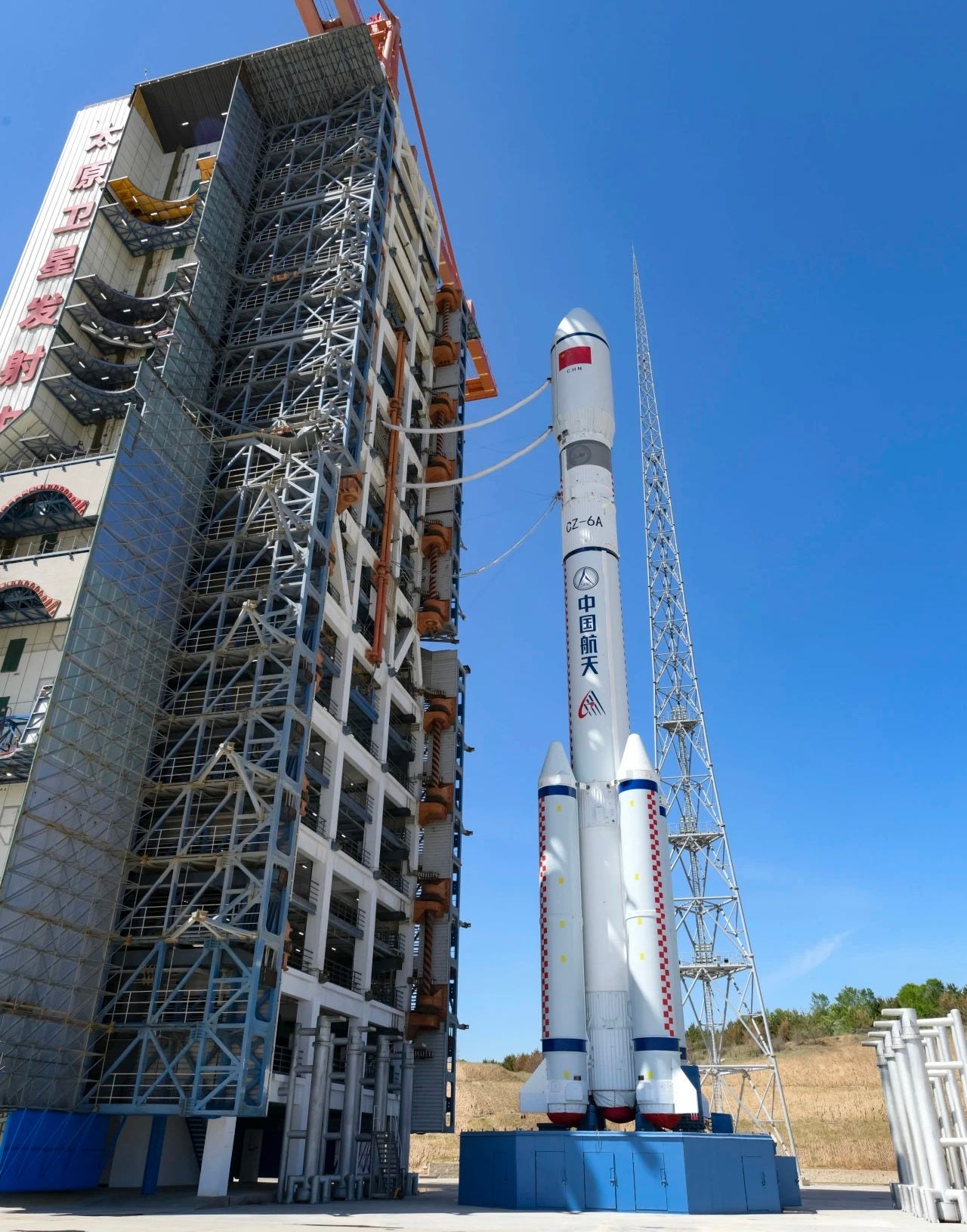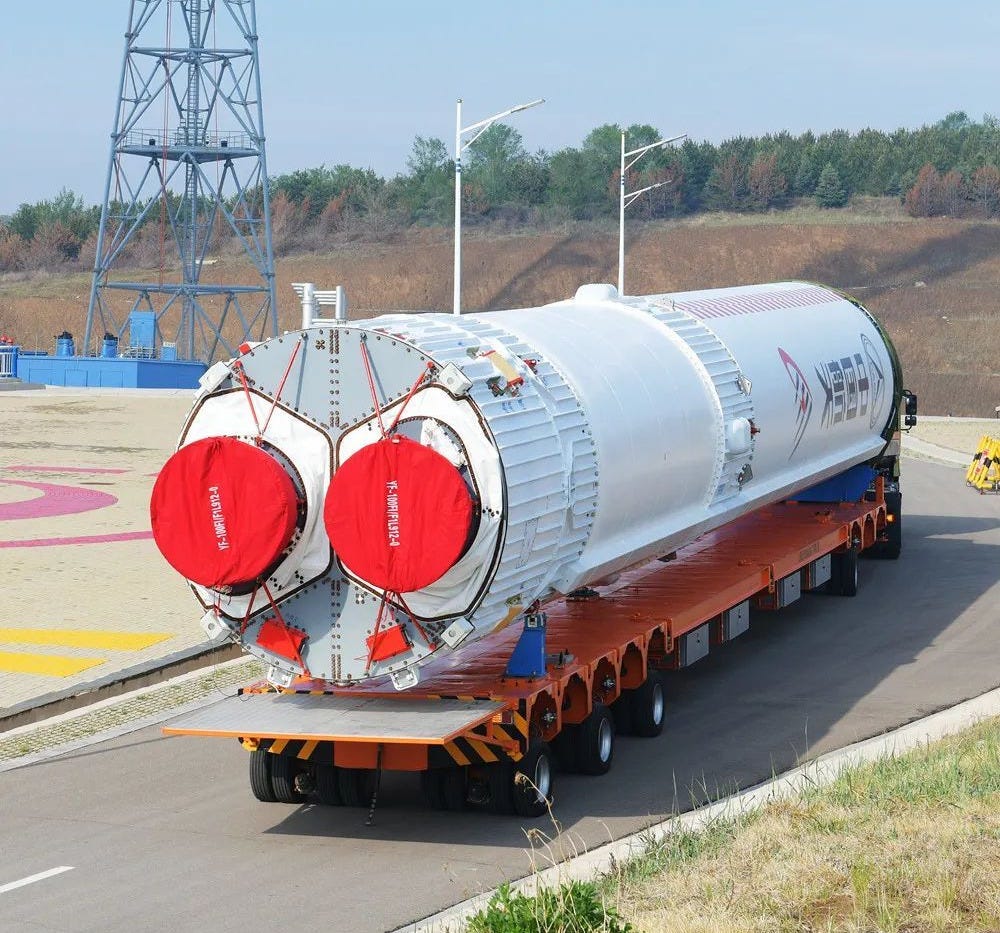GuoWang Makes Taiyuan Debut [Long March 6A Y8]
Another satellite group was launched for the mega-constellation.

A Long March 6A blasted off from Launch Complex 9A at the Taiyuan Satellite Launch Center at 04:45 am China Standard Time on June 6th (20:45 pm Universal Coordinated Time on June 5th), heading for polar orbit carrying a group of satellites.
Atop of the Long March 6A were the four batch of GuoWang (国网) mega-constellation satellites, of which five spacecraft are believed to have been onboard. The Innovation Academy for Microsatellites, Chinese Academy of Sciences (中国科学院微小卫星创新研究院) has contributed to the satellites onboard.
Two different satellite variants are believed to be in use for the constellation, a larger version used on vehicles like the Long March 5B while smaller ones are used when launched atop of rockets similar to the Long March 8A. An electric propulsion system is likely in use due to a planned operational orbit above 1000 kilometers in altitude, as it would be the most efficient means of propulsion to deorbit each spacecraft once they reach the end of their operational lives. Few other details have been shared about the design of GuoWang satellites, but a slide from one of Space Pioneer’s presentations states that each satellite weighs approximately 600 kilograms.
The GuoWang constellation is operated by China Satellite Network Group, a state-owned enterprise, and wholly backed by the Chinese government. By the 2030s up to 13,000 satellites could be in orbit providing worldwide internet services, however China-focused services will be the immediate priority.
GuoWang is currently trailing the Qianfan (千帆) mega-constellation, also set to provide space-based internet services, with 34 satellites now in orbit, compared to Qianfan’s 90.
The Long March 6A has made its fourth flight of the year with today's launch, while being twenty-six days after the last. To ensure operational reliability while moving toward more frequent flights, the test team has implemented enhanced quality assurance protocols, including systematic review of critical inspection points and error-prone procedures, all integrated into a digital launch site management system. It is believed, like previous launch missions, that today’s first-stage and boosters could have supported a different mission if necessary.
In keeping with the last Long March 6A, today’s mission also features a grey band on the second stage, which is believed to be for maintaining propellant temperature over an extended duration, similar to SpaceX’s mission extension kit.
Today’s launch was the 13th mission for the Long March 6A, the 580th launch of the Long March launch vehicle series, and the 237th Long March vehicle launch from the Shanghai Academy of Spaceflight Technology. This was also the 34th launch from China in 2025.
Liftoff video via 卡尔达瓦里希, 空天逐梦, China航天 on Weibo.
Check out the previous Long March 6A launch
Three Satellites, One Tall Rocket [Long March 6A Y9]
A Long March 6A blasted off from the Taiyuan Satellite Launch Center’s Launch Complex 9A on May 11th at 21:27 pm China Standard Time (13:17 pm Universal Coordinated Time). Onboard today’s launch into polar orbit were three satellites.
What is the Long March 6A?
This section is for those less familiar with China's Long March series of launch vehicles.
The Long March 6A is the first new-generation launch vehicle in China to utilize a combination of solid and liquid propellants. This vehicle was developed by the Shanghai Academy of Spaceflight Technology and utilizes a two-and-a-half-stage design, the boosters burn an unspecified solid propellant with the first and second stages burning rocket-grade kerosene and liquid oxygen.
The payload capacity of the launch vehicle is currently as follows:
8,000 kilograms to low Earth orbit
4,500 kilograms to a 700-kilometer sun-synchronous orbit
The first-stage is powered by two YF-100 engines, generating a combined thrust of approximately 244 tons using rocket-grade kerosene and liquid oxygen. The first-stage is augmented by four solid rocket boosters, each producing 124 tons of thrust from an unspecified solid propellant, resulting in a combined booster thrust of 492 tons. Together, the first-stage and boosters generate a total thrust of 736 tons. The second stage is powered by a single YF-115 engine, producing 18 tons of thrust using also burning rocket-grade kerosene and liquid oxygen.
On the launchpad, the Long March 6A is believed to be up to 52 meters tall, a handful of fairings are available, and weighs 530,000 kilograms when fully fuelled. The first and second stages of the vehicle have a diameter of 3.35 meters while the solid-fuelled boosters have a diameter of 2 meters, the fairing has a diameter of 4.2 meters.
So far, every Long March 6A has launched from the Taiyuan Satellite Launch Center, in the north of Shanxi province.




![Three Satellites, One Tall Rocket [Long March 6A Y9]](https://substackcdn.com/image/fetch/$s_!G2t9!,w_1300,h_650,c_fill,f_auto,q_auto:good,fl_progressive:steep,g_auto/https%3A%2F%2Fsubstack-post-media.s3.amazonaws.com%2Fpublic%2Fimages%2Ff4eb07de-0554-4ff7-903d-7933e51da7df_8809x5452.jpeg)

